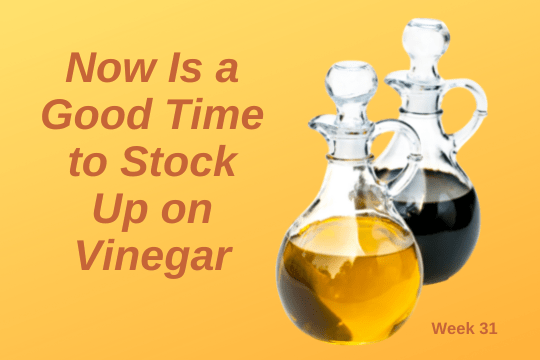Preparedness Challenge Week 31
Welcome to the 2022 Preparedness Challenge!
This week the preparedness challenge is to stock up on vinegar, one of the most versatile products for your food storage. Vinegar may not be on your preparedness radar, but it is a quiet, potent ingredient in many recipes and in food preservation; plus, it is important for a whole range of non-food applications.
Vinegar has been around for thousands of years and was always a basic ingredient in our grandmothers’ kitchens. For starters, store both distilled white vinegar and apple cider vinegar. These are the most common vinegars and are inexpensive and easy to store.
For variety, add red and white wine vinegar, rice vinegar, balsamic vinegar, or fruity specialty vinegars. Explore their uses and enjoy their flavorful addition to your cooking.
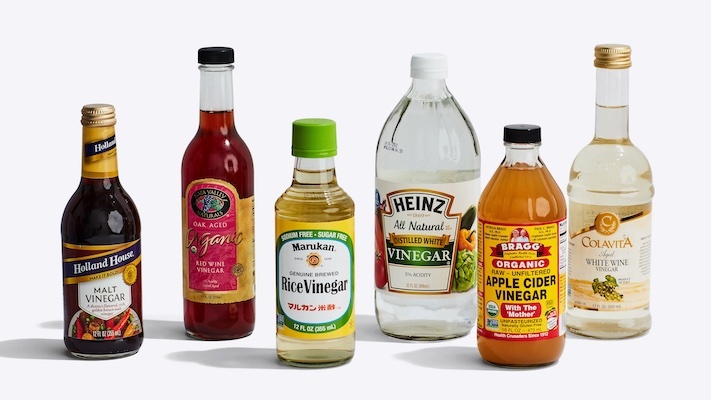
The Preparedness Challenge for this week is to add a gallon of vinegar to your storage pantry.
How Much Vinegar Should You Store?
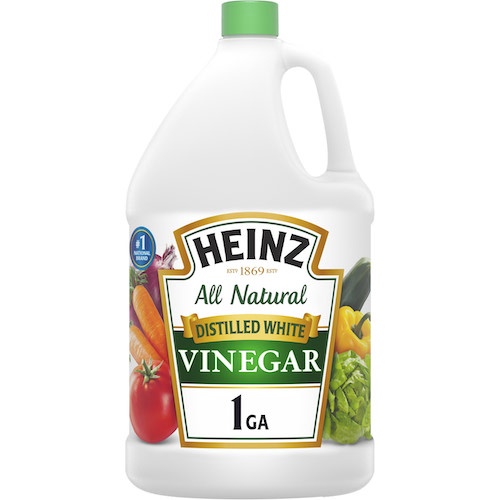
To keep it simple, you can store one gallon of distilled white vinegar and call it good. Or divide the amount between a half gallon of distilled white vinegar, a quart of apple cider vinegar, and several pints of wine, rice, or balsamic vinegars. Vinegar is inexpensive, so you may want to store more than a gallon. Of course, how much you store will depend on your needs and circumstances. Try to always keep some vinegar in reserve.
Uses for Different Types of Vinegars
- White distilled vinegar: pickling
- Apple cider vinegar: salad dressings and marinades
- Wine vinegars: salad dressings and marinades
- Balsamic vinegars: dipping sauce, savory recipes, as an enhancement for vegetables
- Rice vinegar: sushi, salad dressings, stir fries
Vinegar Is Important for Canning and Pickling
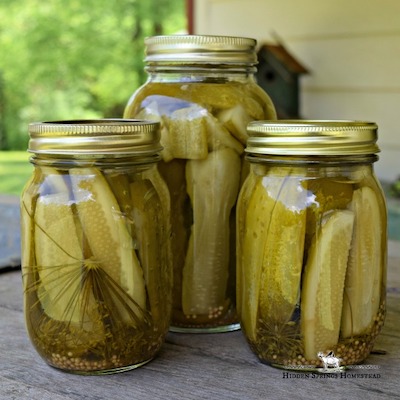
Vinegar contains acetic acid and is a food preservation agent. It was used to preserve vegetables, fruit, meat, and fish long before refrigeration was available. In the pickling process, vinegar increases the acidity of vegetables and fruits which inhibits bacteria from growing and prevents spoiling.
Vinegar, water, salt, sugar, and spices are used in various pickling recipes to preserve.
Tips for Preserving with Vinegar
- Choose recipes from a reliable source
- Use fresh, blemish-free produce
- Be sure your spices are fresh
- Use any food-grade un-iodized salt
- Use distilled white vinegar to preserve color
- Use apple cider vinegar for added flavor
- Use stainless steel, glass, or plastic utensils and containers to prevent the acid from reacting and discoloring food
What Is the Shelf Life of Vinegar?
The main ingredient in vinegar is acetic acid. This gives vinegar its self-preserving quality and an indefinite shelf life. It does not require refrigeration once opened, but keep it in its original container and replace the lid immediately after using to reduce potential contamination. Store it in a cool, dark place away from heat and light.
Distilled white vinegar will remain unchanged indefinitely. Nonwhite vinegars like apple cider vinegar and wine vinegars are safe indefinitely, but other qualities like color and taste may change over time. They also may develop a haze or sediment, but this is only an aesthetic change. The vinegar can be strained and used.
Ten Nonfood Uses for White Vinegar
Vinegar has antimicrobial, antiviral, and anti-fungal properties. Its acidic concentration makes it effective for removing mineral deposit and soap residue. Many people value its medicinal properties as well.
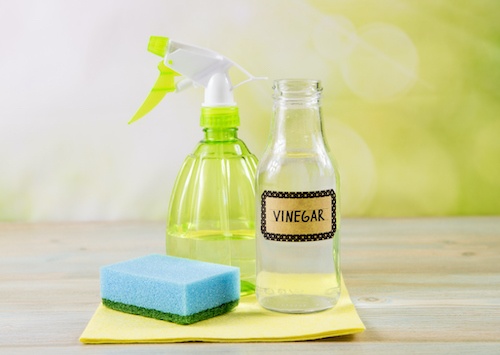
- Dilute with water for a general all-purpose cleaner
- Dissolve mineral deposits on kitchen sink
- Shine refrigerator water dispenser
- Cut grease build-up on the kitchen stove
- Remove pet stains on carpets
- Use to clean bathroom fixtures and counters
- Clean and unclog drains
- Refresh touchable surfaces after someone has been sick
- Clean washing machine or dishwasher
- Use as a laundry booster
Learn More
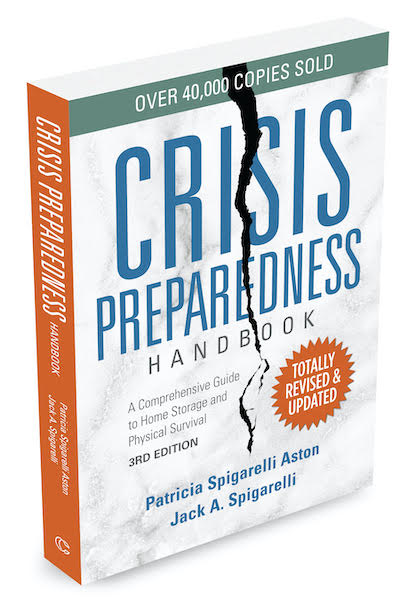
Learn more about preparing for a crisis or emergency in Crisis Preparedness Handbook, Third Edition (2020.) You will learn more about basic food storage, how to store and purify water, communication and sanitation in an emergency, and other important preparedness topics. If you don’t already have a copy, you can find it here on my website CrisisPreparedness.com. Or, read it on Amazon in the Kindle version or hard copy version.
